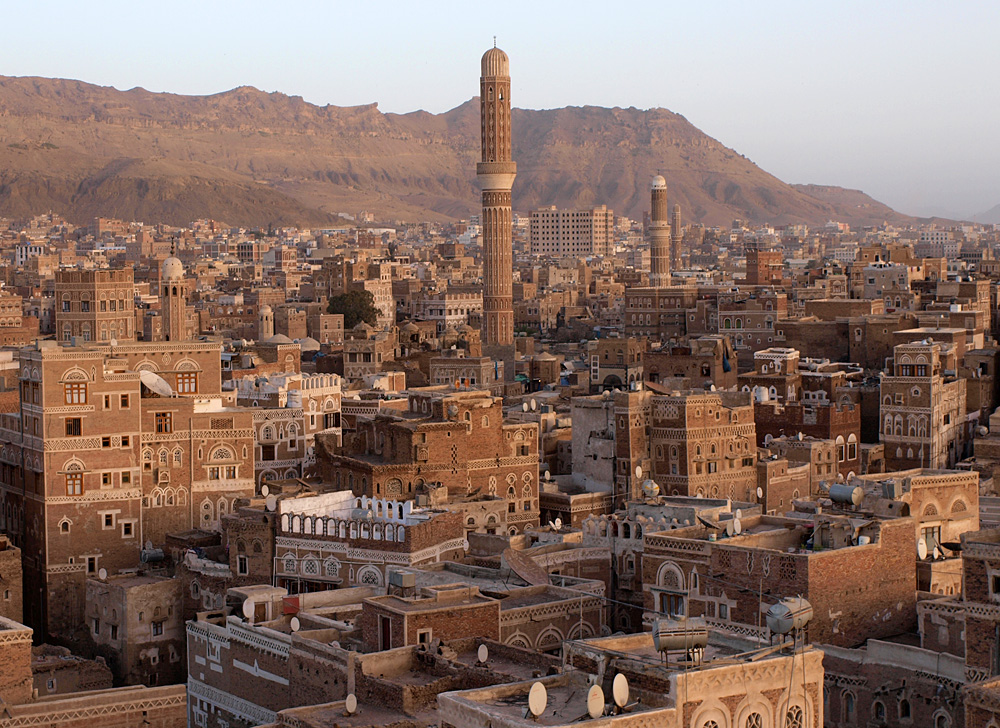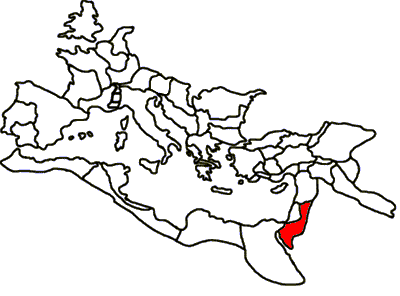|
Ilasaros
Ilasaros (centuryBCE) or Il Sharih Yahdhib ( xsa, 𐩱𐩡 𐩦𐩧𐩢 𐩺𐩢𐩳𐩨, ʾls²rḥ Yḥḍb; ar, إلشرح يحضب) was a king from the Bakil tribe, related to the Banu Hamdan, which took control over the Kingdom of Sabaʾ. He reigned between c. 60-20 BCE during a period of turmoil. His rule was contemporary with a rival tribe led by Sha'r Awtar. Name ''Ilasaros'' ( la, Ilasarus) is Strabo's Greek transliteration of the Sabaean name ''Il Sharih'', meaning " the gods' victor". In the case of Hadramaut, the most important god of their pantheon was usually Sayin. ''Yahdhib'' meant "suppressor", i.e. of rebellions or usurpation. Life Ilasaros led many successful expeditions against the neighbouring kingdoms of Ḥimyar and Hadhramaut. Moreover, he managed to subjugate rebels in the north and to take their children as captives and slaves to his Ghumdan Palace. In the year 25 BCE, the Roman Prefect Aelius Gallus started an expedition to Arabia Fe ... [...More Info...] [...Related Items...] OR: [Wikipedia] [Google] [Baidu] |
Ghumdan Palace
Ghumdan Palace, also Qasir Ghumdan or Ghamdan Palace, is an ancient palace and fortress in Sana'a, Yemen. It is the earliest known castle in the world. All that remains of the ancient site (Ar. ''khadd'') of Ghumdan is a field of tangled ruins opposite the first and second of the eastern doors of the Jami‘ Mosque (Great Mosque of Sana'a). This part of Sana'a forms an eminence which is known to contain the debris of ancient times. The place is located on the extreme southeastern end of Sana'a's old walled city, ''al-Qaṣr'', just west of where the Great Mosque of Sana'a was later built, and is part of the UNESCO World Heritage Site of the Old City of Sana'a. It is sometimes referred to as ''Ghumdan Tower''. According to Arab geographer and historian, Al-Hamdani (c. 893-945), the foundation stones of Ghumdan Palace were laid by Shem, the son of Noah, and finished by the Sabaean monarch Ilī-Sharḥa Yaḥḍib (ca. 8th century BCE), the father of Bilqis. Others say that it was bu ... [...More Info...] [...Related Items...] OR: [Wikipedia] [Google] [Baidu] |
Sabaeans
The Sabaeans or Sabeans (Sabaean:, ; ar, ٱلسَّبَئِيُّوْن, ''as-Sabaʾiyyūn''; he, סְבָאִים, Səḇāʾīm) were an ancient group of South Arabians. They spoke the Sabaean language, one of the Old South Arabian languages.Stuart Munro-Hay, ''Aksum: An African Civilization of Late Antiquity'', 1991. They founded the kingdom of Sabaʾ ( ar, سَبَأ, links=no) in modern-day Yemen, Quran 27:6-93 Quran 34:15-18 which was believed to be the biblical land of Sheba and "the oldest and most important of the South Arabian kingdoms". The exact date of the foundation of Sabaʾ is a point of disagreement among scholars. Kenneth Kitchen dates the kingdom to between 1200 BCE and 275 CE, with its capital at Maʾrib, in what is now Yemen.Kenneth A. Kitchen ''The World of "Ancient Arabia" Series''. Documentation for Ancient Arabia. Part I. Chronological Framework and Historical Sources p.110 On the other hand, Israel Finkelstein and Neil Asher Silberman believe that ... [...More Info...] [...Related Items...] OR: [Wikipedia] [Google] [Baidu] |
Sha'r Awtar
Sha'r Awtar ( xsa, 𐩦𐩲𐩧𐩣 𐩱𐩥𐩩𐩧𐩣) was a king from the Hashid tribe related to Banu Hamdan which took control over the Kingdom of Saba'.Albert Jamme, Inscriptions from Mahram Bilqis, p.135 His rule was contemporary with a rival tribe led by Il Sharih Yahdhib. He led many campaigns against Hadhramaut and Axum Axum, or Aksum (pronounced: ), is a town in the Tigray Region of Ethiopia with a population of 66,900 residents (as of 2015). It is the site of the historic capital of the Aksumite Empire, a naval and trading power that ruled the whole region ... in which he managed to defeat them. See also * List of rulers of Saba and Himyar References {{reflist History of Yemen Middle Eastern kings ... [...More Info...] [...Related Items...] OR: [Wikipedia] [Google] [Baidu] |
History Of Yemen
The history of Yemen describes the cultures, events, and peoples of what is one of the oldest centers of civilization in the Near East. Its relatively fertile land and adequate rainfall in a moister climate helped sustain a stable population, a feature recognized by the ancient Greek geographer Ptolemy, who described Yemen as ''Eudaimon Arabia'' (better known in its Latin translation, ''Arabia Felix'') meaning "''fortunate Arabia''" or "''Happy Arabia''". Yemenis had developed the South Arabian alphabet by the 12th to 8th centuries BC, which explains why most historians date all of the ancient Yemeni kingdoms to that era. Between the 12th century BC and the 6th century AD, it was dominated by six successive civilizations which rivaled each other, or were allied with each other and controlled the lucrative spice trade: Ma'in, Qataban, Hadhramaut, Awsan, Saba, and Himyar. Islam arrived in 630 AD, and Yemen became part of the wider Muslim re ... [...More Info...] [...Related Items...] OR: [Wikipedia] [Google] [Baidu] |
Aelius Gallus
Gaius Aelius Gallus was a Roman prefect of Egypt from 26 to 24 BC. He is primarily known for a disastrous expedition he undertook to Arabia Felix (modern day Yemen) under orders of Augustus. Life Aelius Gallus was the 2nd '' praefect'' of Roman Egypt (''Aegyptus'') in the reign of Augustus during the years 26–24 BC. He replaced Cornelius Gallus, with whom he has often been confused. Aelius Gallus was also known to be an intimate friend of the Greek geographer Strabo and has been identified with the Aelius Gallus frequently quoted by Galen, whose remedies are stated to have been used with success in his Arabian expedition. The expedition to Arabia Felix, of which an account is given by his friend Strabo, as well as by Cassius Dio and Pliny the Elder turned out to be a complete failure. In this expedition, Strabo mentioned Ilasaros as the controller of Hadhramaut at that time. Gallus undertook the expedition from Egypt by the command of Augustus, partly with a view to exp ... [...More Info...] [...Related Items...] OR: [Wikipedia] [Google] [Baidu] |
Bakil
The Bakil ( ar, بكيل, Musnad: 𐩨𐩫𐩺𐩡) federation is the largest tribal federation in Yemen. The tribe consists of more than 10 million men and women they are the sister tribe of Hashid(4 million) whose leader was Abdullah Bin Hussein Alahmar. The member tribes of the Bakil Confederation are found primarily in the far north of the country; its leaders today are the Abo Lhom family. Ancient history Hashid and Bakil were the sons of Jashim bin Jubran bin Nawf bin Tuba'a bin Zayd bin Amro bin Hamdan. Bani Hamdan was already a well known clan in the 1st century AD and it was mentioned in Sabaean inscriptions. Therefore, Hashid and Bakil (the brothers) must have lived in the BC era. In the Middle Sabaean period (the 1st to 4th centuries CE) the Bakil confederation consisted of three ''sha`b''s - Raydah, Amran, and Shibam. In the 3rd century most of Hamdan Hamdani tri ... [...More Info...] [...Related Items...] OR: [Wikipedia] [Google] [Baidu] |
List Of Rulers Of Saba And Himyar
This is a list of rulers of Saba and Himyar. Mukarrib (Mukrab, Karab), a religious title that means "near to God", was used by rulers of Saba' until Karib'il Watar changed his title to ''Malik'' at the time of the kingdom of Saba' and Dhu Raydan that was established between Himyarites and Sabaeans, both descending from ancient South Arabian patriarch Qahtan The terms Qahtanite and Qahtani ( ar, قَحْطَانِي; transliterated: Qaḥṭānī) refer to Arabs who originate from South Arabia. The term "Qahtan" is mentioned in multiple ancient Arabian inscriptions found in Yemen. Arab traditions be .... The title Tubba, which means "the one who follows the sun like a shadow" was used by Himyarites to refer to their rulers. Mukaribs of Saba' Kings of Saba' Kings of Saba' & Dhu Raydan Kings of Saba' & Dhu Raydan & Hadhramaut & Yamnat 2nd Himyarite Kingdom King of Saba', Dhu Raydan, Hadramawt, Yamnat and their Arabs, on Tawdum (the high plateau) and Tihamat References ... [...More Info...] [...Related Items...] OR: [Wikipedia] [Google] [Baidu] |
Ancient Greek
Ancient Greek includes the forms of the Greek language used in ancient Greece and the ancient world from around 1500 BC to 300 BC. It is often roughly divided into the following periods: Mycenaean Greek (), Dark Ages (), the Archaic period (), and the Classical period (). Ancient Greek was the language of Homer and of fifth-century Athenian historians, playwrights, and philosophers. It has contributed many words to English vocabulary and has been a standard subject of study in educational institutions of the Western world since the Renaissance. This article primarily contains information about the Epic and Classical periods of the language. From the Hellenistic period (), Ancient Greek was followed by Koine Greek, which is regarded as a separate historical stage, although its earliest form closely resembles Attic Greek and its latest form approaches Medieval Greek. There were several regional dialects of Ancient Greek, of which Attic Greek developed into Koi ... [...More Info...] [...Related Items...] OR: [Wikipedia] [Google] [Baidu] |
Nabataean
The Nabataeans or Nabateans (; Nabataean Aramaic: , , vocalized as ; Arabic: , , singular , ; compare grc, Ναβαταῖος, translit=Nabataîos; la, Nabataeus) were an ancient Arab people who inhabited northern Arabia and the southern Levant. Their settlements—most prominently the assumed capital city of Raqmu (present-day Petra, Jordan)—gave the name ''Nabatene'' ( grc, Ναβατηνή, translit=Nabatēnḗ) to the Arabian borderland that stretched from the Euphrates to the Red Sea. The Nabateans emerged as a distinct civilization and political entity between the 4th and 2nd centuries BCE,Taylor, Jane (2001). ''Petra and the Lost Kingdom of the Nabataeans''. London: I.B.Tauris. pp. 14, 17, 30, 31. . Retrieved 8 July 2016. with their kingdom centered around a loosely controlled trading network that brought considerable wealth and influence across the ancient world. Described as fiercely independent by contemporary Greco-Roman accounts, the Nabataeans were annexed ... [...More Info...] [...Related Items...] OR: [Wikipedia] [Google] [Baidu] |
Augustus
Caesar Augustus (born Gaius Octavius; 23 September 63 BC – 19 August AD 14), also known as Octavian, was the first Roman emperor; he reigned from 27 BC until his death in AD 14. He is known for being the founder of the Roman Principate, which is the first phase of the Roman Empire, and Augustus is considered one of the greatest leaders in human history. The reign of Augustus initiated an imperial cult as well as an era associated with imperial peace, the '' Pax Romana'' or '' Pax Augusta''. The Roman world was largely free from large-scale conflict for more than two centuries despite continuous wars of imperial expansion on the empire's frontiers and the year-long civil war known as the " Year of the Four Emperors" over the imperial succession. Originally named Gaius Octavius, he was born into an old and wealthy equestrian branch of the plebeian ''gens'' Octavia. His maternal great-uncle Julius Caesar was assassinated in 44 BC, and Octavius was named in Caes ... [...More Info...] [...Related Items...] OR: [Wikipedia] [Google] [Baidu] |
Arabia Felix
Arabia Felix (literally: Fertile/Happy Arabia; also Ancient Greek: Εὐδαίμων Ἀραβία, ''Eudaemon Arabia'') was the Latin name previously used by geographers to describe South Arabia, or what is now Yemen. Etymology The term Arabia Felix (Latin: “Happy, or Flourishing, Arabia”) was the Roman translation of the earlier Greek Hellenistic term ''Arabia Eudaimon,'' attributed to Eratosthenes of Cyrene. ''Felix'' has the simultaneous meaning of "fecund, fertile" and "happy, fortunate, blessed." Arabia Felix was one of three regions into which the Romans divided the Arabian peninsula: Arabia Deserta, Arabia Felix, and Arabia Petraea. The Greeks and the Romans called Yemen Arabia Felix. The French term ''L'Arabie Heureuse'' ("Happy Arabia") comes from a poor translation from Latin. This area being the best irrigated of the peninsula, it was called "Fertile Arabia". One of the earliest such maps, dated 1654, was produced by the French cartographer Nicolas Sanson. Hi ... [...More Info...] [...Related Items...] OR: [Wikipedia] [Google] [Baidu] |
Prefect
Prefect (from the Latin ''praefectus'', substantive adjectival form of ''praeficere'': "put in front", meaning in charge) is a magisterial title of varying definition, but essentially refers to the leader of an administrative area. A prefect's office, department, or area of control is called a prefecture, but in various post-Roman empire cases there is a prefect without a prefecture or ''vice versa''. The words "prefect" and "prefecture" are also used, more or less conventionally, to render analogous words in other languages, especially Romance languages. Ancient Rome ''Praefectus'' was the formal title of many, fairly low to high-ranking officials in ancient Rome, whose authority was not embodied in their person (as it was with elected Magistrates) but conferred by delegation from a higher authority. They did have some authority in their prefecture such as controlling prisons and in civil administration. Feudal times Especially in Medieval Latin, ''præfectus'' was used to r ... [...More Info...] [...Related Items...] OR: [Wikipedia] [Google] [Baidu] |






